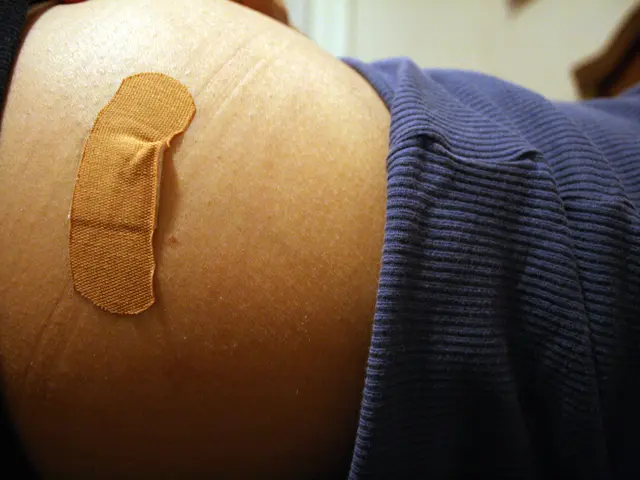Reversing Progress: 2024 Maternal Mortality Rates in the US
Maternal death figures in the U.S. saw a minor uptick in the previous year, according to health authorities' reports.
In an unexpected turn, the number of women who died around childbirth last year took a leap backward, nullifying two years of steady decline, according to preliminary data released on Wednesday.
The Centers for Disease Control and Prevention revealed that 688 people passed away during pregnancy or shortly after giving birth in 2024. This number was higher than the 669 deaths reported in 2023 but still lower than the escalating levels in 2022 and 2021, which marked more than five decades of escalation.
The maternal mortality rate climbed to 19 deaths per 100,000 live births compared to 18.6 the previous year.
CASPER, WYOMING - MARCH 10: An examination room lies empty at Wyoming's last abortion clinic, Wellspring Center, March 10, 2025 in Casper, Wyoming. In late February, Wyoming's conservative legislature passed a bill HB42, requiring abortion clinics performing in-clinic procedures to meet the regulatory requirements of ambulatory surgical centers, resulting in the clinic halting all services. (Photo by Natalie Behring/Getty Images)
As per the CDC, deaths encompass women who expired while pregnant, during childbirth, and up to 42 days post-birth due to conditions related to pregnancy. Consequences such as excessive bleeding, blood clot formations, and infections have been dominant causes.
During the COVID-19 pandemic, maternal deaths witnessed a sharp increase since the virus presented a severe danger to pregnant women. Moreover, during the pandemic's worst days, physicians' burnout possibly contributed to the risk by neglecting pregnant women's concerns, experts claim.
The decrease in COVID-19 cases denotes a major contributing factor in the decline in maternal deaths in 2022 and 2023, experts suggest. However, these improvements seem to be reversed by factors that potentially reduce access to medical care, experts say.
Listed among these factors are the closure of rural healthcare facilities and the U.S. Supreme Court decision that invalidated the federal right to abortion, creating discomfort among some medical professionals when addressing pregnancy-related emergencies.
The U.S. ranks among the highest maternal mortality rates among wealthy nations. Prior research has unveiled pronounced racial disparities in such deaths, with Black women dying disproportionately more than White women.
Delving Deeper: Insights Behind the Trend
Changes in Death Certificate Reporting
One crucial variable is the insertion of a "pregnancy checkbox" on death certificates, which has been implemented gradually since 2000 to 2023. Recent research indicates that the checkbox led to a 66% increase in reported maternal deaths, although much of this upsurge can be attributed to better reporting rather than an actual increase in risk [1][3].
Impact of COVID-19
Maternal deaths experienced a significant growth during the COVID-19 pandemic, affecting various demographic groups. The adjusted rate of maternal deaths almost doubled in 2021 compared to previous years, reaching 18.9 deaths per 100,000 live births [3].
Racial Disparities
Historically, maternal mortality rates have been significantly higher among Black women compared to White women. For instance, in Texas in 2023, Black women were 2.5 times more likely than White women to succumb to maternal deaths [2]. This disparity is exacerbated by systemic healthcare inequalities and access to care.
Restrictions on Abortion Services
Current restrictions on abortion services, particularly in specific states, are also contributing factors to maternal mortality rates. These restrictions can limit access to safe reproductive healthcare services, potentially resulting in an increase in mortality rates. Studies have indicated that post-abortion bans have contributed to a 33% overall surge in maternal mortality, highlighting the potential hazards associated with reduced access to comprehensive reproductive care [2].
In conclusion, the increase in maternal mortality rates in the U.S., particularly among certain racial demographics, is influenced by factors such as changes in death certificate reporting, the COVID-19 pandemic, and systemic inequalities. Abortion restrictions play a role in these trends by restricting access to essential healthcare services. Addressing these factors necessitates comprehensive healthcare access reforms and policy changes.
Key Steps Towards Reducing Maternal Mortality
- Improved Healthcare Access: Striving for universal access to quality prenatal and postpartum care can help prevent avoidable pregnancy-related deaths.
- Policy Reforms: Policies must focus on increasing access to abortion services and eradicating systemic barriers that widen racial disparities.
- Data Accuracy: Continual refinement of death certificate reporting to ensure accurate data and a better understanding of maternal mortality trends is vital.
- The Centers for Disease Control and Prevention (CDC) reported that in Wyoming, the last abortion clinic, Wellspring Center, halted all services due to the state's new requirements for abortion clinics to meet the regulatory requirements of ambulatory surgical centers.
- Experts suggest that in addition to the decrease in COVID-19 cases, the improvements in the maternal mortality rate in 2022 and 2023 were influenced by better reporting due to the "pregnancy checkbox" on death certificates, implemented since 2000 to 2023.
- Studies have indicated that current restrictions on abortion services, particularly in specific states, can limit access to safe reproductive healthcare services, potentially resulting in an increase in maternal mortality, such as the disproportionate deaths of Black women compared to White women.
- In an effort to reduce maternal mortality rates, key steps include improving healthcare access, focusing on policy reforms that increase access to abortion services and eradicate systemic barriers, and ensuring continuous refinement of death certificate reporting for more accurate data and a better understanding of maternal mortality trends.









